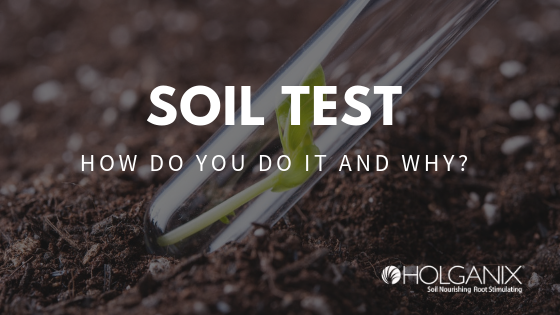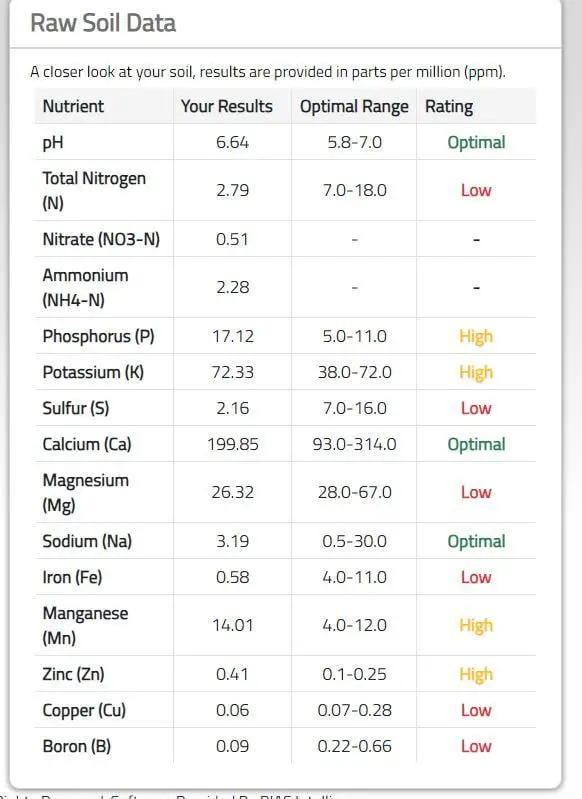You should do a soil test before planting. It helps you understand soil health and nutrient levels.
Soil testing is a critical step for any gardener or farmer. It ensures your soil has the right nutrients for healthy plant growth. By testing your soil, you can prevent problems before they start. Healthy soil means healthy plants. Knowing when to test your soil can save you time and money.
Testing at the right time gives you a clear picture of your soil’s condition. It helps you make informed decisions about fertilizing and planting. Whether you’re growing vegetables, flowers, or a lawn, soil testing is essential. It provides valuable insights that lead to better results. So, when is the best time to test your soil? Let’s explore this further.
Importance Of Soil Testing
Soil testing helps plants grow strong. It shows what the soil needs. Healthy soil gives plants what they need to grow. Plants can fight diseases better. They also look better. Soil testing helps you know what to add to the soil. This makes plants happy.
Soil can lack important nutrients. Testing the soil shows missing nutrients. Adding these nutrients helps plants grow well. Plants need nutrients to stay green and healthy. Soil testing prevents problems. It saves time and money. You can avoid guessing what plants need. Soil testing gives clear answers.
Optimal Seasons For Soil Testing
Spring is a great time for a soil test. Soil is ready to wake up. Testing in spring helps to plan your garden. You can check nutrients levels. You can see if soil needs more organic matter. Spring test results help in choosing the right plants. Plants grow better in healthy soil.
Fall is also a good time for a soil test. Soil is resting after summer. Testing in fall helps to prepare for winter. You can add nutrients before it gets cold. Soil will be ready by spring. Fall testing helps in planning for next year. Soil health is key for a good garden.
Pre-planting Soil Test
Testing soil before planting vegetables is very important. It helps to know what nutrients are in the soil. This test can show if the soil is too acidic or too alkaline. By knowing this, you can add the right fertilizers. This helps plants grow better and stronger.
Flower beds also benefit from a soil test. Different flowers need different soil conditions. Some flowers need more nitrogen. Others need more potassium. A soil test will help you know what to add. It will make your flowers bloom beautifully. This makes your garden look amazing.

Credit: www.holganix.com
Post-harvest Soil Test
Check soil right after harvest. Identify nutrient levels left by crops. See what plants took from the soil. Find out if soil has enough nutrients for next crops. Test pH levels too. This ensures crops grow well. Keep a record of results for future planning.
Test soil again before planting new crops. Amend soil based on test results. Add needed fertilizers or organic matter. This helps new crops grow better. Plan crop rotation based on soil health. Healthy soil means healthy crops and better yield. Repeat tests yearly for best results.
Soil Testing Before Fertilization
Over-fertilization can harm plants. It can also waste money. Soil testing helps know what your soil needs. Avoid guessing. Use the right amount of fertilizer. This keeps plants healthy. It also protects the environment.
Soil tests show what nutrients are missing. Apply only what is needed. This saves money. It also helps plants grow better. Efficient use of fertilizer means stronger plants. They will have fewer problems. Soil tests make gardening easier.
Testing After Significant Weather Events
Soil testing is crucial after significant weather events. Heavy rains, floods, and storms can change soil composition. Regular soil tests help ensure healthy plant growth.
After Heavy Rainfall
Heavy rain can wash away nutrients from the soil. Testing the soil after heavy rain helps to know its current state. It helps determine what nutrients are missing. This ensures plants get what they need to grow healthy. Soil might also become too compacted. Checking for compaction is also important.
After Drought Conditions
Drought makes soil dry and hard. Nutrient levels can drop. Testing soil after drought shows what nutrients are low. It helps to see if the soil needs water or other treatments. This keeps your plants healthy and strong. Soil might also have salt build-up. Testing helps find salt levels too.
Frequency Of Soil Testing
Testing soil every year helps to keep track of nutrient levels. It shows if your soil needs more nutrients. This test can help improve crop yield. It also helps to identify problems early. Farmers can adjust fertilizers based on the results. This saves money and protects the environment.
Some soils are stable and do not need yearly tests. Testing once every 2-3 years is enough. This approach works for home gardens. It saves time and reduces cost. Farmers with stable soil can also follow this plan. It is important to test if you see any changes in plant growth.

Credit: antlerking.com
Interpreting Soil Test Results
Soil pH shows how acidic or alkaline the soil is. Most plants like a pH between 6.0 and 7.0. If pH is too low, the soil is acidic. If pH is too high, the soil is alkaline. Adjust pH to help plants grow well. Use lime to raise pH. Use sulfur to lower pH. Check pH levels often to keep soil healthy.
Soil tests show what nutrients your soil lacks. Look for important nutrients like nitrogen, phosphorus, and potassium. These help plants grow strong and healthy. Add fertilizers to provide these nutrients. Follow test results to know what and how much to add. Too much or too little can harm plants. Balance is key.

Credit: geopard.tech
Frequently Asked Questions
What Is A Soil Test?
A soil test analyzes the nutrient content and pH level of your soil. It helps determine the fertility of the soil and guides you in making necessary amendments for better plant growth.
Why Should I Test My Soil?
Testing your soil helps identify nutrient deficiencies and pH imbalances. It ensures that plants get the right nutrients, leading to healthier growth and better yields.
When Is The Best Time For A Soil Test?
The best time to test your soil is in the fall or spring. Testing during these times helps you prepare your soil for the upcoming growing season.
How Often Should Soil Be Tested?
Soil should be tested every 2-3 years. Regular testing helps monitor soil health and maintain optimal growing conditions for your plants.
Conclusion
Regular soil tests are vital for healthy plant growth. They help identify nutrient deficiencies. This leads to better crop yields. Testing ensures the right balance of minerals. Accurate results guide proper fertilization. Soil tests prevent over-fertilizing, saving you money. Regular checks promote sustainable gardening.
Testing helps diagnose soil problems early. Healthy soil means stronger plants. Make soil testing a routine part of gardening. It’s a small step for big results. Happy gardening!

My mission is to help you bring the beauty of nature indoors with expert advice, detailed plant care guides, and creative design ideas.





Leave a Reply